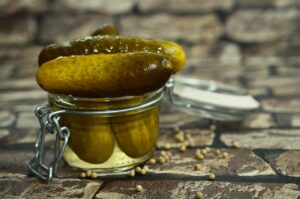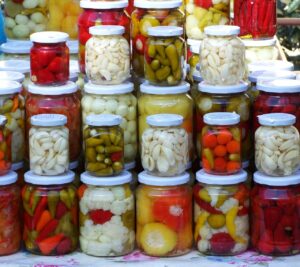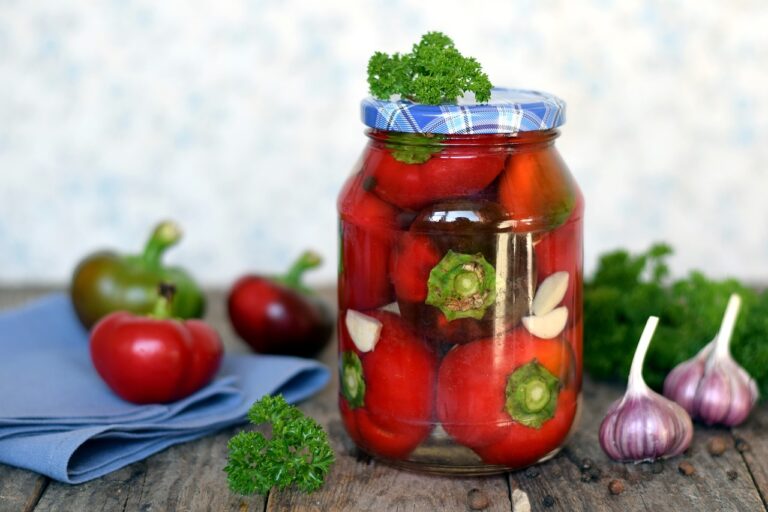Pickling is a traditional food preservation technique that enhances both the taste and shelf life of fresh produce. Whether you’re a home cook looking to make your veggies last longer or a foodie exploring new flavors, this guide will teach you everything from pickling basics to advanced techniques.

What Is Pickling?
At its core, pickling is the process of preserving food by soaking it in a solution of vinegar or brine. This method works by creating an acidic environment that prevents harmful bacteria from growing. Historically, pickling has been used for centuries by various cultures to preserve seasonal harvests and add a tangy kick to their meals.
Today, there are two primary methods of pickling:
- Vinegar pickling: A quick and easy way to create crisp, tangy vegetables using a vinegar-based brine.
- Fermentation pickling: A natural process where vegetables ferment in saltwater brine, producing probiotics beneficial for gut health.
For more detailed instructions on safe pickling practices, check out this resource on the National Center for Home Food Preservation.
The Science of Pickling
Pickling works by lowering the pH level of food, either through vinegar or natural fermentation. The high acidity or salt concentration prevents spoilage, keeping your veggies crunchy and flavorful for months. Understanding the science behind pickling is essential to ensure your pickled products are safe to eat.
For an extensive guide on how to pickle different foods, see the Epicurious guide. Whether you’re using vinegar or fermentation, the key to pickling success lies in sterilizing your jars and following the correct brine ratio.
Types of Pickling Methods
Vinegar Pickling
- Involves soaking vegetables in a solution of vinegar, water, sugar, and salt.
- Ideal for quick pickling.
- Common vegetables include cucumbers, carrots, onions, and peppers.
Fermentation Pickling
- Uses a saltwater brine and allows vegetables to naturally ferment over time.
- Produces healthy probiotics, similar to those found in yogurt or kombucha.
- Great for making foods like sauerkraut and kimchi.
Step-by-Step Guide to Pickling
- Choose Your Vegetables 🥕
Opt for fresh, firm veggies such as cucumbers, peppers, radishes, and carrots. Cut them into uniform slices for even pickling.
For those interested in growing their own herbs to use in pickling, check out our complete guide to companion planting. It provides helpful tips on which herbs grow well together, ensuring you have fresh dill, garlic, and coriander for your homemade pickles.
- Prepare the Brine 🍯
For a standard brine, mix:- 1 cup vinegar (white, apple cider, or rice)
- 1 cup water
- 1 tbsp sugar
- 1 tbsp salt Feel free to add herbs and spices like garlic, dill, and mustard seeds for extra flavor.
- Pack the Jars 🫙
Layer your vegetables in sterilized jars, ensuring they are tightly packed. Leave about half an inch of space at the top. - Pour the Brine 🍶
Pour the hot brine over the vegetables, making sure they’re fully submerged. Seal the jars tightly and let them cool to room temperature. - Refrigerate or Ferment ❄️
For vinegar pickling, refrigerate the jars after cooling. For fermentation pickling, store them in a cool, dark place for several days or weeks.
Popular Vegetables for Pickling

- Cucumbers: The classic pickle ingredient.
- Peppers: Adds a spicy kick.
- Cauliflower: Provides a crunchy, hearty texture.
- Carrots and Beets: For a sweeter, earthy flavor.
- Radishes: A colorful, peppery option.
Different Types of Vinegars for Pickling
The type of vinegar you choose will affect the flavor and color of your pickles:
- White Vinegar: The most commonly used, sharp and acidic.
- Apple Cider Vinegar: Adds a fruity sweetness to the pickles.
- Rice Vinegar: Milder with a hint of sweetness.
- Red Wine Vinegar: Rich and bold but changes the color of your veggies.
- Malt Vinegar: A traditional favorite for pickling onions.
Common Pickling Spices
Adding spices can elevate the flavor of your pickles. Here are some common choices:
- Dill
- Garlic
- Mustard seeds
- Coriander
- Peppercorns
- Bay leaves
Experiment with different combinations to create your signature pickle flavor!
FAQs
1. How long do pickled vegetables last?
Pickled vegetables can last up to three months when refrigerated. Fermented pickles may last even longer due to their probiotic content.
2. Can I pickle without vinegar?
Yes! Fermentation preserving uses saltwater instead of vinegar and is a great alternative for those looking to create probiotic-rich pickles.
3. What’s the difference between quick fermenting and fermentation?
Quick pickling uses vinegar for instant results, while fermentation relies on natural bacteria to slowly preserve and flavor the vegetables over time.
4. How do I know if my pickles have gone bad?
If your pickles smell foul, become slimy, or develop mold, they are no longer safe to eat and should be discarded.
Conclusion
Pickling is a versatile and fun way to preserve your favorite vegetables while enhancing their flavor. Whether you’re into the crisp, tangy taste of quick pickles or the gut-health benefits of fermented veggies, there’s a pickling method for everyone. So gather your jars, pick your veggies, and start experimenting with your favorite flavors today!
For more inspiration and step-by-step instructions, check out this comprehensive guide on pickling from the Old Farmer’s Almanac.
Happy pickling!
